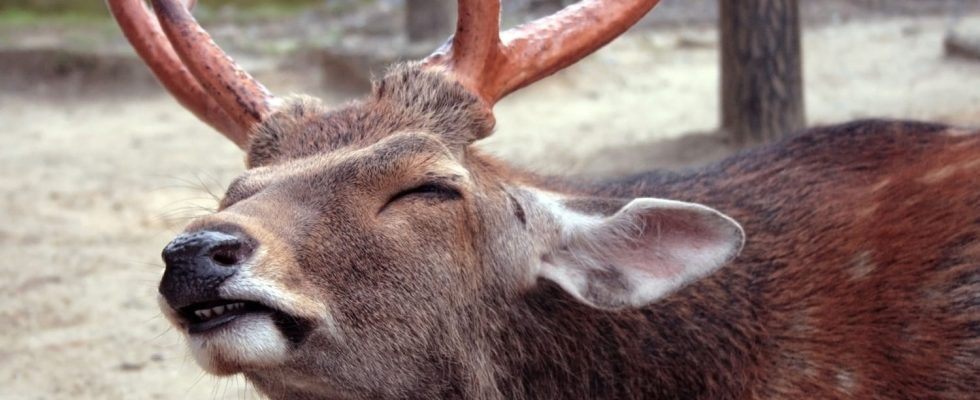In the United States, several hundred animals are affected by zombie deer disease. A pathology which, like mad cow disease, affects the brain and causes strange behaviors. A risk for humans?
After mad cowa new disease with a strange name and symptoms is causing concern: lzombie deer disease. This progressive neurological disease, deadly and incurable, affects the nervous system of deer such as deer, reindeer and roe deer. Since October 2023, an increase in cases has been observed in the United States (more than 800 animals contaminated recently) notably in Yellowstone National Park, in the Wyoming. Cases have also been reported in Canadaa little in Europe (Sweden, Norway…) and in South Korea but not in France. However, its potential spread to humans worries scientists and health authorities. “About 60% of emerging infectious diseases reported worldwide originate from animals, whether wild or domestic“, reported theWorld Health Organization last October 23. “The mad cow epidemic in Great Britain (who did 223 human victims worldwide) provided an example of how overnight things can get crazy when a contagion event occurs, e.g. from livestock to humans […] No one is saying this is definitely going to happen, but it’s important that people are prepared“, says Dr. Cory Anderson, epidemiologist interviewed in The Guardian.
What is zombie deer disease?
Known under the scientific name of chronic wasting diseasechronic wasting disease or chronic wasting disease, zombie deer disease is a progressive and fatal disease that belongs to the prion disease family (pathogenic proteins) like the disease of mad cow Or the disease of Creutzfeldt-Jacob (the human form of mad cow disease). It affects the brain and spinal cord breeding and free-ranging deer, reindeer, roe deer, elk and elk, indicate the Centers for Disease Control and Prevention (CDC) of the United States.
Can humans be contaminated?
For now, This disease only affects animals. It is believed to spread between animals through contact with contaminated body fluids and tissues or indirectly via water or food. However, research suggests the possibility of transmission to humansespecially if humans came to eat infected meat. The scientists of theEuropean Food Safety Authority (EFSA) refuted this idea in 2017. According to them, there is no no scientific evidence that humans can contract zombie deer disease by consuming meat from infected animals.
“Several thousand people probably ate infected deer meat”
The Alliance for Public Wildlife, responsible for conserving North American wildlife, estimated in 2017 that 7,000 to 15,000 animals infected were unintentionally eaten by humans every year, and that this number expected to increase by 20% per year. “In Wisconsin, where testing of game meat is not mandatory, several thousand people likely ate meat from infected deer” reports Dr. Michael Osterholm, director of the Center for Infectious Disease Research and Policy at the University of Minnesota, interviewed in The Guardian. For the moment, no human beings appear to have fallen ill.
Should we be afraid of it in France?
So far, no transmission of zombie deer disease has been reported in France.
Symptoms that suggest zombie-like behavior
Like other prion diseases, zombie deer disease can have an incubation period of more than one yearleading brain damage. Of the clear neurological signs can then develop slowly with the animals as :
- Apathetic behavior (extreme sluggishness, depressed state, glazed look) reminiscent of “zombies”, hence his nickname
- A drastic weight loss (emaciation)
- A lack of coordination: animals stumble and have difficulty moving
- Excessive thirst or urination
- Droopy ears
- Significant saliva production
- An aggressiveness
Can we die from it?
The pathogen is extremely difficult to eradicate.
Zombie Deer Disease Is Deadly: Contaminated animals always end up dying. Currently, no treatment or vaccine is available. “The pathogen is extremely difficult to eradicate. It can persist for years in dirt or on surfaces, is resistant to disinfectants, formaldehyde, radiation and incineration at 600°C“, report CDC scientists. The only solution to avoid it: prevention. Hunters are strongly encouraged to have hunted game tested before it is consumed to avoid any risk of spread. They are also recommended to wear latex or rubber gloves when handling dead animals and not to skin them with their regular kitchen utensils.
